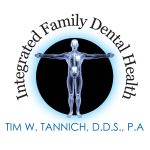
We care deeply for our patient family and are oral-systemic experts. Because we have invested enormous amounts of time and money in quality education, we know best what people need for strong teeth and a long health span. Our patients appreciate this and always listen intently to what we tell them they need to do. They happily reach into their wallets and hand us their credit card. Right? In my 34 years of clinical experience: Wrong! People buy what they want, not necessarily what they ...
Read More








